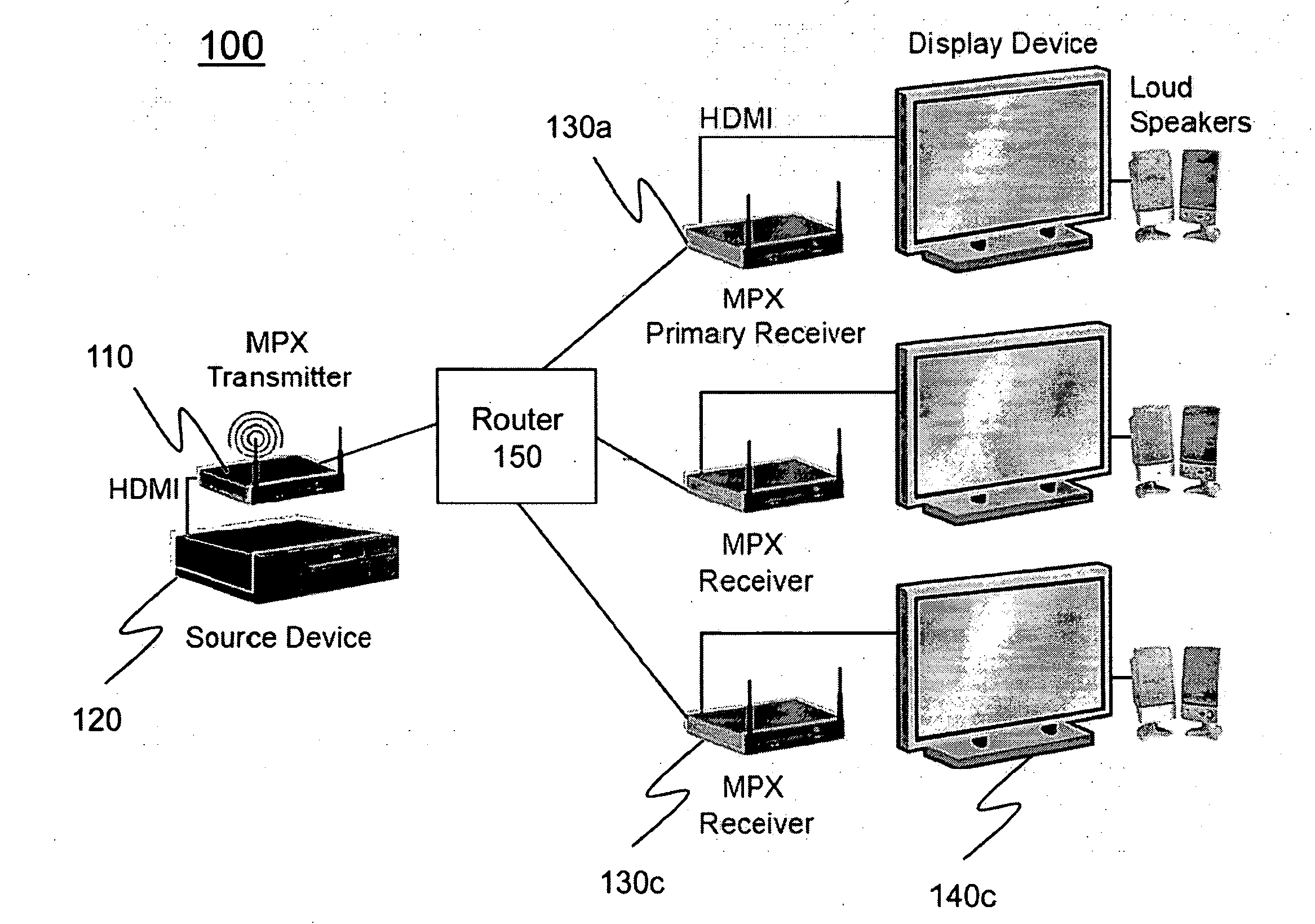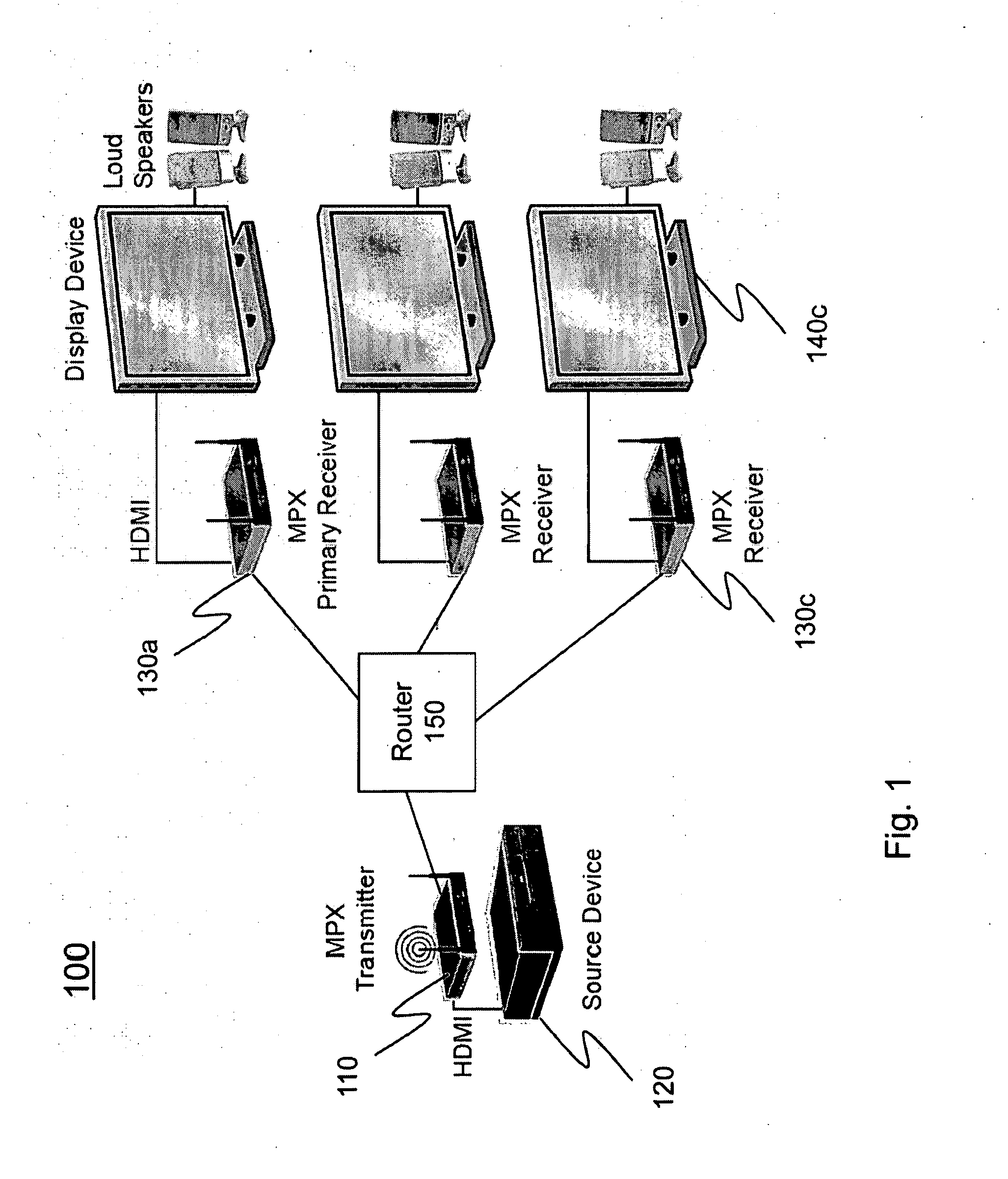System and Method for Regulating Bandwidth in a Multicast Video Transmission System
a multi-cast video and bandwidth regulation technology, applied in the field of multi-cast video transmission system bandwidth regulation system, can solve the problems of missing or corrupted information retransmission, and the possibility of doing more harm than good with a retransmission protocol
- Summary
- Abstract
- Description
- Claims
- Application Information
AI Technical Summary
Problems solved by technology
Method used
Image
Examples
Embodiment Construction
[0014]Turning to FIG. 1, a multi-display system 100 includes a transmitter 110 (at an originating end) that receives audio and / or video from an audio / video source 120 (e.g., a cable / satellite set-top box, a computer, a DVD player (either original definition or high definition), a game console, a CD player or any other electronics device) and converts the audio and / or video signal (hereinafter AV signal) to a digitized, packetized form. (In configurations in which a transmitter receives video already in digital form, the transmitter need not digitize the video but only packetize it.) The transmitter 110 then forwards (e.g., using at least one wireless packet-switched network) the converted AV signal on to plural receivers 130a-130c which convert the digital AV signals back to their native form and output them to display devices connected to AV connectors (260 of FIG. 3) via AV cables. As would be appreciated by those of ordinary skill in the art, the number of receivers 130 may be ot...
PUM
 Login to View More
Login to View More Abstract
Description
Claims
Application Information
 Login to View More
Login to View More - R&D
- Intellectual Property
- Life Sciences
- Materials
- Tech Scout
- Unparalleled Data Quality
- Higher Quality Content
- 60% Fewer Hallucinations
Browse by: Latest US Patents, China's latest patents, Technical Efficacy Thesaurus, Application Domain, Technology Topic, Popular Technical Reports.
© 2025 PatSnap. All rights reserved.Legal|Privacy policy|Modern Slavery Act Transparency Statement|Sitemap|About US| Contact US: help@patsnap.com



